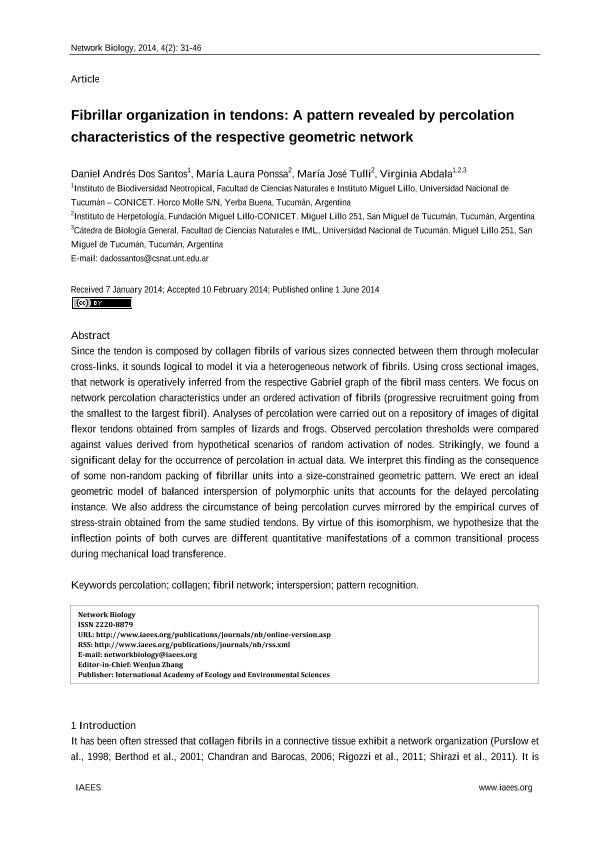Artículo
Fibrillar organization in tendons: a pattern revealed by percolation characteristics of the respective geometric network
Fecha de publicación:
2014
Editorial:
International Academy of Ecology and Environmental Sciences
Revista:
Network Biology
ISSN:
2220-8879
Idioma:
Inglés
Tipo de recurso:
Artículo publicado
Clasificación temática:
Resumen
Since the tendon is composed by collagen fibrils of various sizes connected between them through molecular cross-links, it sounds logical to model it via a heterogeneous network of fibrils. Using cross sectional images, that network is operatively inferred from the respective Gabriel graph of the fibril mass centers. We focus on network percolation characteristics under an ordered activation of fibrils (progressive recruitment going from the smallest to the largest fibril). Analyses of percolation were carried out on a repository of images of digital flexor tendons obtained from samples of lizards and frogs. Observed percolation thresholds were compared against values derived from hypothetical scenarios of random activation of nodes. Strikingly, we found a significant delay for the occurrence of percolation in actual data. We interpret this finding as the consequence of some non-random packing of fibrillar units into a size-constrained geometric pattern. We erect an ideal geometric model of balanced interspersion of polymorphic units that accounts for the delayed percolating instance. We also address the circumstance of being percolation curves mirrored by the empirical curves of stress-strain obtained from the same studied tendons. By virtue of this isomorphism, we hypothesize that the inflection points of both curves are different quantitative manifestations of a common transitional process during mechanical load transference.
Palabras clave:
Percolation
,
Collagen
,
Fibril Network
,
Interspersion
,
Pattern Recognition
Archivos asociados
Licencia
Identificadores
Colecciones
Articulos(CCT - NOA SUR)
Articulos de CTRO.CIENTIFICO TECNOL.CONICET - NOA SUR
Articulos de CTRO.CIENTIFICO TECNOL.CONICET - NOA SUR
Citación
Dos Santos, Daniel Andrés; Ponssa, María Laura; Tulli, María José; Abdala, Virginia Sara Luz; Fibrillar organization in tendons: a pattern revealed by percolation characteristics of the respective geometric network; International Academy of Ecology and Environmental Sciences; Network Biology; 4; 2; -1-2014; 31-46
Compartir




